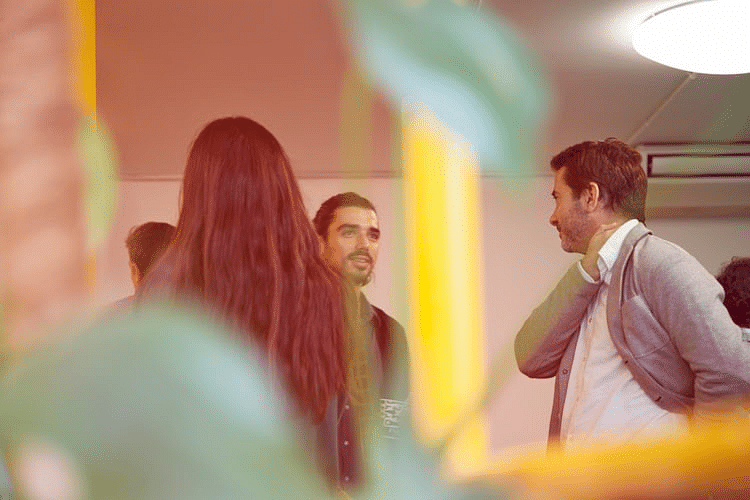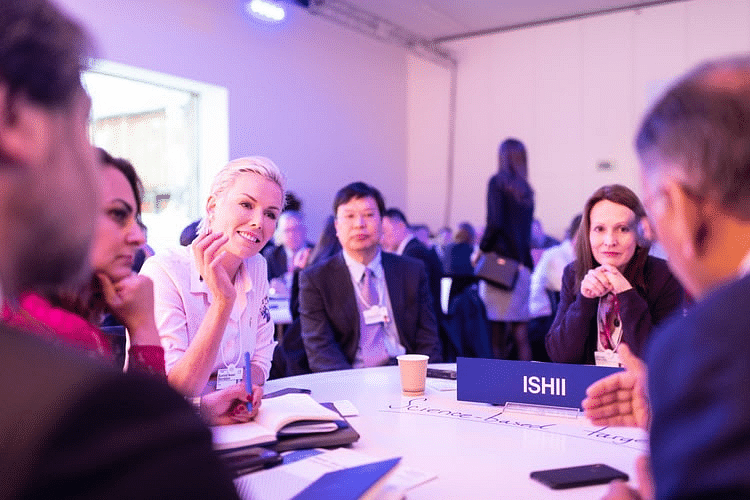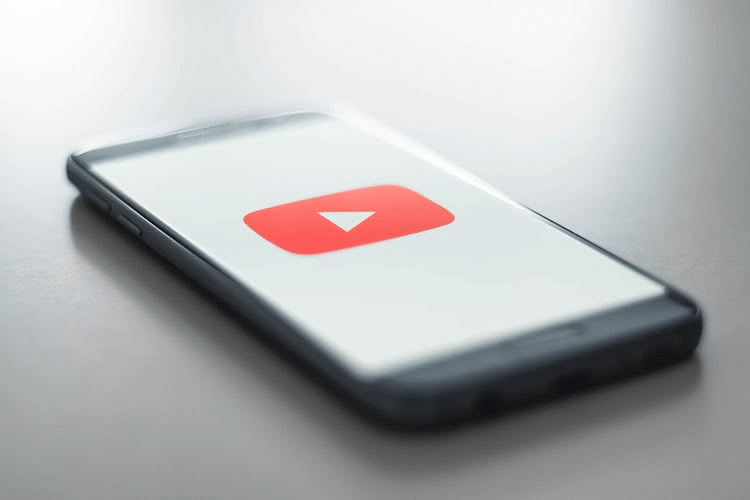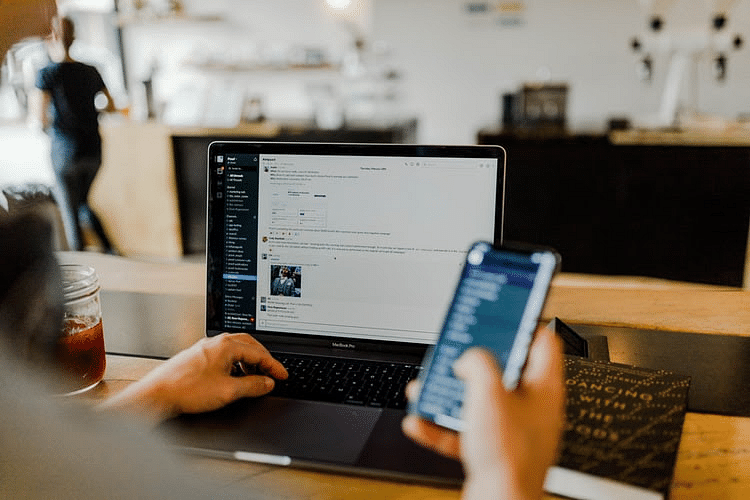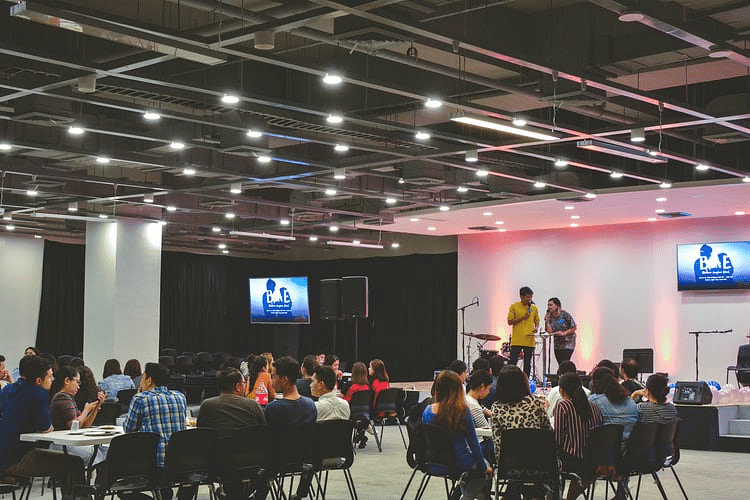
PR tips on how to fill your sales funnel when you’re in a trade show
By Jim James, Founder EASTWEST PR and Host of The UnNoticed Entrepreneur.
The objectives of trade shows are to make leads, get enquiries, and get sales into your funnel. In my The UnNoticed Entrepreneur podcast, I shared some ways on how you can use public relations to get a greater number of leads into that funnel.
Trade Shows Require Resources
Trade shows are a big investment. And you need to be prepared and plan ahead to make the most of those three to four days that you're at the site.
During the episode, I talked about how to create content announcing that you'll be part of the show, how to reach out to the media and get them to cover you prior to or during the show, and how you can publicise across your whole organisation what you’ll be offering to your potential leads.
Keep in mind that trade shows are an expense both in terms of time and money. Often, they're used as a way to get the whole organisation to focus on an event, especially if there's a product launch. But while they create their own tension, trade shows also create an opportunity.
What I wanted to share are some of my experiences of what I do for my clients and for myself while in a trade show.
It's About Gaining People’s Attention
A trade show is all about getting people to come to your booth or your event during the show (e.g. your speaking event if you're joining a conference). But how can that be done?
What I always like to do first is to think about the focus for that trade show; the key message that needs to be delivered.
Often during trade shows, people will go to a booth that looks nice. However, that booth hasn't necessarily got a key message focused around the event. This is why it's important to know: What is the key message that you want to give?
Like any other form of communication, a trade show should address the issues in the mind of the audience. It's not addressing what you want to sell but what the audience is looking to buy.
Image from Unsplash
On the Visuals and the Language
When we think about the graphics, we often think about what we've done and what we think looks good. For instance, the prominence of our logo. What we're not always thinking about is what it is that the people in the show would be looking at.
So how can we make the trade show graphics context-sensitive?
One issue is the language. Sure, English may be a great language across Europe and all over the world. But it will show great respect to have your content in the local language.
In light of the COVID-19 pandemic and the reduction of international travels, I think we're going to see a reversion back to European shows being European shows and Asian shows being Asian shows. However, for about a decade (in the late ‘90s to early 2000s), trade shows really became global.
COVID is going to change that. But by addressing a local audience with their local language, you're creating an opportunity to show that you're actually in the region.
Getting in Touch with the Media
When doing trade shows, you also have to think about what you can do in advance. Ideally, you're going to be making some announcement or showing something new and fresh.
In every event, some media will be attending. Normally, events are organised by companies like Informa or Reed Exhibitions that have both trade shows, conferences, and publications. They used to call it the tripod: Apart from the event itself, they have a magazine and direct mailing service to offer as a fully complementary service to their customers.
If you look on the website of a trade show, they’ll show the organiser and a list of official media partners. It’s then possible to be in touch with these media because these media partners have an interest in profiling the show and what’s going to take place.
Though some of the smaller media won’t have journalists at the show, the bigger ones would have them (or editors) attend the event. In fact, you’ll often find that one of the deals between organisers and publications is for a journalist to host a panel and bring their audience to the event. They know that if the journalist is speaking, the panel will get a writeup in the media afterwards.
It’s all about exposure. And you can reach out to those publications in advance to find out which media are going.
The Role of PR Firms
Some big events will hire a public relations firm. For instance, my firm EASTWEST Public Relations has been the official PR form for various trade shows (e.g. CommunicAsia in Singapore).
The role of the PR firm is to make sure that all exhibitors get the maximum exposure that they can from that event. They’re actually looking for news to share with the media in advance. If you’re launching something, the official media agency will be promoting it.
Image from Unsplash
The metrics for a show include how many people will exhibit and how many people will attend. The job of the PR agency is to get mainstream and other trade media to cover what’s going to happen in the event in order for people to want to go to that event. And there’s an opportunity for you there.
What I do is I draft a pitch for my client, which we will then send to the media in advance. We’re going to do two things with this. First is to work to get an announcement to say that our client is going to that event. Second is to get interviews for my client at the event.
A trade show is really a great photo opportunity. And for the media, it’s a very efficient venue to get lots of interviews done.
However, keep in mind that there’ll be a lot of demand for their time. For example big shows like the National Association of Broadcasters (NAB), the media will have a schedule every 15 to 30 minutes with different spokespeople at different booths.
The journalists have to work hard. But one of the key elements of success is to give the media a reason to come — and to give it early enough. If you wait too late, then you would miss the gate and they won’t be able to put you into their schedule.
Timing is Key
When reaching out to the media, it’s also vital to look at the timing.
After we’ve got our key message and our media list, four weeks in advance, we’ll write to the media to say that our client is coming to the trade show and, also, to list what they’re going to talk about. It should also note when the client is available and invite the media to come and meet them.
This is something that you should try and lock a whole month in advance. Some media may decline and say they’re not ready for that. However, it’s still better to be too early than to be too late.
If you’re going in with just the week before the show, chances are, you’ll not get a slot with the media.
I prioritise media relations because the media have communities that I and my client don’t currently reach. I want to get people who are going to the show to become aware of my client.
Working on Own Channels
Once I’ve got that in place (e.g. getting the interview schedule sorted out), I will then work on my own channels. These channels and the content that I am to create can be so much more flexible because I get to control the medium.
First of all, it should be on the front page of your website that you’re attending a trade show. Second, you can also create an infographic and use platforms like Visme or Canva or even PowerPoint. State the date, the venue, the booth number, and your intended key message — the reason why people should come and see you.
Next, create a short explainer video through tools like Lumen5, which is one of my favorites because of its affordability and simplicity. In the video, you can put your infographic, your logo, some stock video, and even a screenshot of the trade show website.
You can use this 30-second to one-minute video to say that you’re coming, and it can also be loaded on YouTube or Vimeo.
Image from Unsplash
You can also start to post that using your social media tools like Buffer, Zoho, or HubSpot. You can schedule when it will be going out or even schedule it as a repeat post. It could be a repeat post, which could be going out to Facebook, LinkedIn, and Twitter (There are some debates about whether Twitter will let you post the same content multiple times. In my experience, I can do that. But the worst case scenario is to edit the headline a bit per post and get it to run).
If you’re struggling to write content, there are a couple of tools that you can use. One is AI-Writer, which is $29 a month, with a two-month free trial. You can put in some keywords and it will write articles for you. You can also use Jarvis, which is also $29 a month for its basic version, to help you write headlines and copy.
Tapping Your Own Staff for Promotions
Another thing that you can do is to make sure that all of your staff are promoting your content.
There are several companies that attend a trade show and send out a press release, but don’t ask all of their employees to share that. Yet now, increasingly, employees are on social media. Many of their friends or partners or suppliers will be connected with them through Instagram, Pinterest, Facebook, LinkedIn, or WeChat if you’re using that in China.
It’s why you should get everyone in the organisation to share the fact that you’re going to be at that event. Apart from it’s free to do, it importantly demonstrates team effort.
This is very simple but often overlooked. For example, if you have a short explainer video, you can ask your employees to share the Vimeo link or they themselves can upload it.
Buying Keywords
When promoting your trade show participation, you can also buy keywords.
Because they’re only a temporary event, trade shows are not heavily competed for on Google AdWords. Organisers, by and large, don’t spend any money on buying keywords for it. But you can. So even you can go into Google AdWords and buy the keywords for that show. This way, anyone who looks for the show will see your name and your booth coming up. And that could link back to your website.
You can also buy related words. For instance, if a trade show about plastics is happening in Paris, you can buy “trade show in Paris in plastics” or “plastics and trade shows” or any other combination of these. It’s relatively inexpensive to do and you can run that for two to four weeks.
Using Email Marketing
Before the trade show, you can also use email marketing.
Image from Unsplash
If you have a mailing list, those in the list should also be receiving your key message announcement, along with a call to action (ideally, a booking system like Calendly or Book It Like A Boss). Bear in mind that you’re trying to get leads. What you want to do is to send out an email announcement to everybody that you’re connected with.
The content could also be the short video that I mentioned that you can create. If you hosted a video on VideoAsk, for example, you can send it out to people through your Customer Relations Management (CRM) tool. Through it, you can say that you’re going to go to this show and ask your audience if they’d like to talk to you.
Another tool that you can use is Vidyard, which takes your video and integrates it with MailChimp. If you go all the way to the integration with HubSpot, it will really help you update your CRM.
Again, you can also tap your staff for email promotions. What they can do is to add the booth details to their auto signatures. In the past episodes, I mentioned our auto signature partner, which is a tool that you can use for this one. You can also create an auto signature around a particular trade show and everybody in the organisation can send their emails bearing that auto signature.
Everyone is connecting with people related to the business. They may not all be in the same country as the trade show or they may not all be buyers or perspectives. However, if they’re customers in some way or another, then why not add those trade show details to your auto signature and invite them to click on a link to book an appointment and automatically link to their calendars.
What You Should Do During the Trade Show Itself
Trade shows are a huge opportunity to build leads. But they’re also a huge opportunity to lose the initiative. At the trade show itself, you should also have some kind of mechanism for collecting those leads.
In the old days, trade show participants used to do it by collecting business cards. After gathering them, they go back to the office and type them in.
Now, it’s not necessary to do that as there are now tools like scan readers (some trade show organisers already provide them). When people arrive at your booth, you scan the quick-response code (QRC) on their badge. Because the data is already in the database, the organisers will be able to provide those to you later. This can already cover the whole area of lead enquiry and management.
However, what’s important is that after the event, you share the news that you attended a trade show. You also have to follow up with the people who attended and even send a message to those people who didn’t attend so they’d know what they missed.
During the event itself, you also have to promote the fact that you’re there.
Image from Unsplash
For our clients, what we’ve been doing is to post two to three tweets every day, a Facebook post, and even host a Facebook Live. Everywhere now has a wi-fi or 4G connection, which is perfectly good enough for a Facebook Live, StreamYard, or even a Zoom setup (now, you can connect to your Facebook and do a Zoom conference live).
You can also upload the video directly to LinkedIn. You can also use native uploads from your mobile phone into LinkedIn to say that you’re currently at a trade show and invite those who are in the market and in the area to see your booth.
Wrapping Up
Being at a trade show is absolutely a dynamic place to create and share content from.
Personally, I love to think of myself as a reporter at trade shows who picks up some fun bits and shares not just what my clients are doing but what other people are doing as well. Because what we’re doing is building a relationship with people that we want to do business with.
Trade shows are a huge investment and commitment. And it can be a huge waste of time. But they need not be like that if you plan in advance and proactively market when you’re there and follow it up with a comprehensive post-event promotion.
If there’s anything that I can do to help you with your trade show or other event, drop a line at jim@eastwestpr.com. My book The UnNoticed Entrepreneur is also out now on Amazon and all major shops including Barnes and Noble. There, you can learn lots of tools and tips on how you can get noticed at a trade show.
This article is based on a transcript from my podcast The UnNoticed Entrepreneur, you can listen here.
Cover image by Product School on Unsplash

